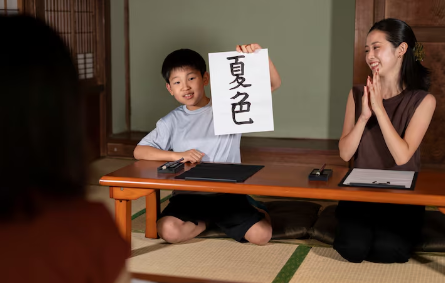When learning Japanese, students often encounter words that cannot be translated neatly into English. One such word is “Jyokyo” (状況), commonly translated as “situation,” “circumstances,” or “state of affairs.” Yet these translations only scratch the surface of what “Jyokyo” truly conveys. Understanding its nuances can help learners gain insight into Japanese communication, which often relies on context and unspoken cues. In this article, we will explore the meaning of Jyokyo, how it is used in everyday life, and why it is a vital concept in Japanese culture.
What Does Jyokyo Mean?
At its core, “Jyokyo” (pronounced jo-kyo) combines the characters 状 (state or condition) and 況 (situation or circumstances). Together, they express a broad sense of the “current situation” or “existing conditions.” While English words like “circumstances” or “status” are close, Jyokyo carries a stronger emphasis on context — the surrounding conditions that shape decisions, behavior, or communication. In Japanese society, where indirectness and harmony are valued, acknowledging the Jyokyo is a sign of social awareness and sensitivity.
How Jyokyo Is Used in Daily Conversation
In everyday Japanese, Jyokyo appears in both formal and casual contexts. For instance, a business professional might say, “現在の状況を確認してください” (Please check the current situation) in a meeting. A student might comment on the “Jyokyo” of the weather before deciding on weekend plans. It can also be used metaphorically to describe someone’s circumstances in life, such as job conditions or financial status. This flexibility makes Jyokyo an essential vocabulary word for anyone interacting in Japanese.
Cultural Significance of Jyokyo
Jyokyo is not just a word but a reflection of cultural values. In Japan, decisions are often made collectively, and understanding the “situation” is critical before taking action. Recognizing the Jyokyo shows respect for group dynamics and context, which can influence everything from business negotiations to casual conversations. This emphasis on situational awareness underscores the importance of harmony (wa) in Japanese culture. By learning about Jyokyo, language learners also gain insight into the social fabric of Japan.
Common Phrases with Jyokyo
Because of its versatility, Jyokyo appears in many common expressions. Examples include:
-
“Jyokyo ni yotte” (depending on the situation)
-
“Jyokyo wo haaku suru” (to grasp or understand the situation)
-
“Jyokyo ga kawatta” (the situation has changed)
These phrases highlight how deeply the concept of Jyokyo is woven into everyday Japanese communication. Understanding and using them correctly can dramatically improve your fluency and naturalness when speaking.
Why Jyokyo Is Important for Language Learners
For non-native speakers, learning Jyokyo is more than just memorizing vocabulary. It’s about developing an instinct for context. In Japanese, words, tone, and timing are often chosen based on the surrounding Jyokyo. By tuning into these subtle cues, learners can respond more appropriately, avoid misunderstandings, and build stronger relationships with Japanese speakers. Mastering this concept helps bridge the gap between textbook knowledge and real-life interaction.
Conclusion
Jyokyo is a deceptively simple yet culturally rich term that captures the importance of context in Japanese life. By understanding its meaning, uses, and cultural nuances, learners can improve both their language skills and their appreciation of Japanese society. Whether you’re planning to visit Japan, conduct business there, or simply explore the language, developing an awareness of Jyokyo will serve you well. In the end, grasping Jyokyo means more than just knowing a word — it’s learning to see the world through a Japanese cultural lens.
🔹 FAQ
Q1: What does Jyokyo mean in Japanese?
A1: Jyokyo (状況) generally means “situation” or “circumstances” but also implies the broader context surrounding an event or decision.
Q2: How do you pronounce Jyokyo?
A2: It’s pronounced “jo-kyo” with a soft “j” sound at the beginning.
Q3: Is Jyokyo used in formal or informal settings?
A3: Both. It appears in business, academic, and casual conversation, making it a versatile word.
Q4: What’s the difference between Jyokyo and Basho?
A4: “Basho” means “place” or “location,” while “Jyokyo” refers to the “situation” or “state of affairs.”
Q5: Why is Jyokyo important in Japanese culture?
A5: It reflects the cultural emphasis on context, harmony, and situational awareness, all of which shape communication and decision-making in Japan.
Q6: How can learning Jyokyo improve my Japanese?
A6: By mastering Jyokyo and related phrases, you’ll better understand how to respond appropriately to different social and conversational contexts.





